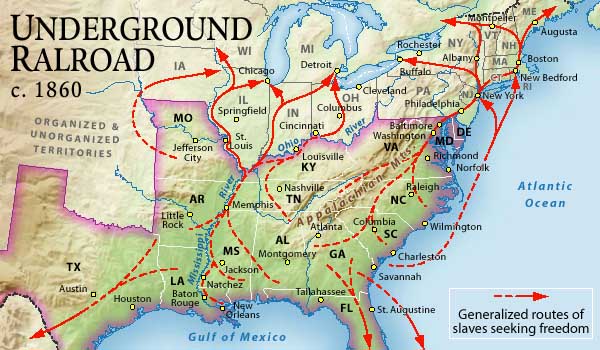The Underground Railroad was the term used to describe a network of persons who helped escaped slaves on their way to freedom in the northern states or Canada. The term gained currency in the 1830s, as northern abolitionists became more vocal and southern suspicions of threats to their peculiar institution grew.
George Washington had commented upon such practices by the Quakers as early as 1786. George Washington complained about how one of his runaway slaves was helped by a “society of Quakers, formed for such purposes”
The Underground Railroad was neither underground nor a railroad. It got its name because its activities had to be carried out in secret, using darkness or disguise, and because railway terms were used by those involved with system to describe how it worked. Various routes were lines, stopping places were called stations, those who aided along the way were conductors and their charges were known as packages or freight. The network of routes extended through 14 Northern states and “the promised land” of Canada, beyond the reach of fugitive slave hunters.
Those who most actively assisted slaves to escape by way of the “railroad” were members of the free black community (including former slaves like Harriet Tubman), Northern abolitionists, philanthropists and church leaders like Quaker Thomas Garrett. Harriet Beecher Stowe, famous for her novel Uncle Tom’s Cabin, gained firsthand knowledge of the plight of fugitive slaves through contacts with the Underground Railroad in Cincinnati, Ohio.
Source: Monday Open Thread: The Underground Railroad
Located in Ashtabula, Ohio, Hubbard House was a safehouse for slaves who were looking to gain their freedom through passage of the Underground Railroad. This house was built around 1840 by William and Catherine Hubbard. Located right on Lake Erie, the house was a perfect place to hide slaves for a day or two until conditions were optimum for them to make there way to the beach and onto a boat that would take them to Canada.
